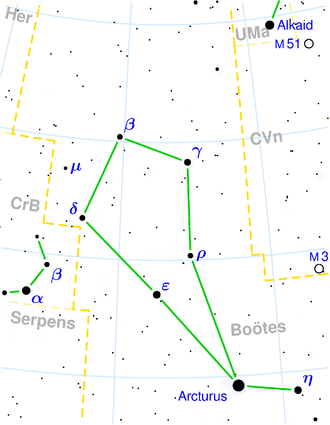NGC 5893
| Galaxy NGC 5893 |
|
|---|---|

|
|
| SDSS recording | |
| AladinLite | |
| Constellation | Bear keeper |
|
Position equinox : J2000.0 , epoch : J2000.0 |
|
| Right ascension | 15 h 13 m 34.2 s |
| declination | + 41 ° 57 ′ 32 ″ |
| Appearance | |
| Morphological type | SB (r) b |
| Brightness (visual) | 13.1 mag |
| Brightness (B-band) | 13.9 likes |
| Angular expansion | 1.2 ′ × 1.1 ′ |
| Position angle | 30 ° |
| Surface brightness | 13.4 mag / arcmin² |
| Physical data | |
| Redshift | 0.017949 ± 0.000050 |
| Radial velocity | (5381 ± 15) km / s |
|
Stroke distance v rad / H 0 |
(246 ± 17) · 10 6 ly (75.4 ± 5.3) Mpc |
| history | |
| discovery | Wilhelm Herschel |
| Discovery date | April 9, 1787 |
| Catalog names | |
| NGC 5893 • UGC 9774 • PGC 54351 • CGCG 221-041 • MCG + 07-31-42 • IRAS 15117 + 4208 • GC 4071 • H II 678 • h 1913 • GALEX ASC J151334.22 + 415730.9 • HOLM 701B • LDCE 1113 NED001 | |
NGC 5893 is a 13.2 mag bright bar-spiral galaxy of the Hubble type "SBb" in the constellation Bear Guardian in the northern sky . It is estimated to be 246 million light years from the Milky Way and about 85,000 ly in diameter. It is likely gravitationally tied to NGC 5895 . Together with NGC 5896 they form the optical galaxy trio HOLM 701 .
The object was discovered on April 9, 1787 by Wilhelm Herschel with an 18.7-inch reflector telescope, who described it as "F, S, resolvable, in a row with three stars".
